Formula 1: Why 2016 could be Mercedes' undoing
- Published
- comments

Mercedes pair Hamilton and Rosberg had more than one close encounter on the track in 2015
The excesses of Christmas and New Year may still be fresh in the mind, but the new Formula 1 season is closer than you might think.
It is just 76 days until the lights go out in Melbourne's Albert Park for the start of the Australian Grand Prix and behind the scenes in factories across Europe the 22 cars from 11 teams that will contest the season are already coming together.
As the clock ticks down to the start of the shortest period of pre-season testing in F1 history - just eight on-track days in Spain starting on 22 February - we look at the five key issues that could shape the 2016 grand prix season.
Can Mercedes handle driver rivalry?
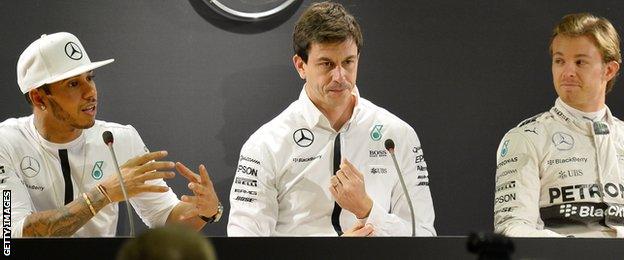
Tension between Hamilton and Rosberg returned after the Briton's "too aggressive" overtake at the United States GP
Mercedes team boss Toto Wolff has clearly spent his Christmas break pondering how to handle the rivalry between his drivers, Lewis Hamilton and Nico Rosberg, in 2016.
The tensions between the two were largely buried through last year as Hamilton cruised to the title, but they re-emerged in the final six races as Rosberg finally found his form.
This may well have been caused by Hamilton easing off having tied up the title with three races to go. But if the German can continue the performances that led to a run of six poles and three wins with which he ended the season, the fight could be much closer in 2016.
The likelihood of Mercedes remaining the team to beat has left Wolff pondering his duty to the wider sport and he has raised the possibility of letting the drivers race more freely in 2016.
"I want the dominance to continue but if it were to continue like this I need to think what we do so we do not become the enemy," Wolff told the Mail on Sunday in an interview over the Christmas period.
"Maybe it's about unleashing them completely. Give them their own strategy."
Hamilton and Rosberg have been allowed to compete on track for the last two years, but within specific guidelines operated by the team.
Key among these has been that the lead driver always gets first choice on pit-stop timing.
This is to prevent the driver behind gaining what has been deemed an unfair advantage by stopping first and using the extra grip of new tyres to take the lead.
But it reduces the possibility of the two swapping positions and restricts racing to on the track, where passing is difficult between two evenly matched cars.
Wolff's suggestion - which is only an idea for now - would undoubtedly make life more entertaining for those watching. But it would effectively force the two drivers' engineering teams to work in opposition to each other.
And it would increase the risk of one of the drivers being beaten by a rival from another team as it could risk them ending up on an unfavourable strategy.
The background to this is that Wolff has said he will consider changing his driver line-up if the disharmony between the drivers starts to affect the team. And that remark is made in the context of Rosberg's contract being up for renewal at the end of the season.
For everyone at Mercedes, there could be quite a tightrope to walk in 2016.
Will the Ferrari revival continue?
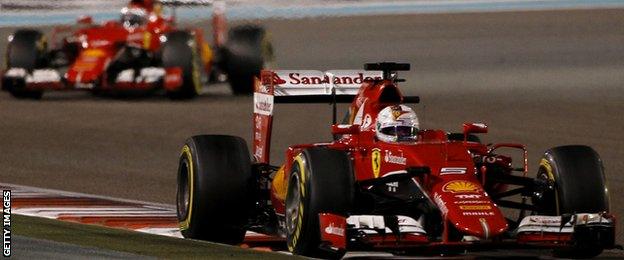
Four-time champion Vettel lead Ferrari's revival in 2015, while team-mate Raikkonen crashed a little more than his team would have liked
Ferrari were a team to a large extent re-born in 2015, the pain of a winless 2014 behind them and three excellent victories by four-time world champion Sebastian Vettel raising optimism for the future.
But can they keep it up?
Last year's progress was based on a very specific issue. The new hybrid engine had a design flaw in 2014 - its energy recovery system was under-par - and Ferrari rectified it for 2015.
But, despite being not far off engine parity with Mercedes, they remained on average 0.6 seconds a lap slower than the champions in qualifying.
In Formula 1, that's an awfully large gap to close in one winter.
The 2016 car will be the first to be produced fully by the re-shaped team under highly regarded technical director James Allison, following a Ferrari staff cull at the end of the aforementioned disastrous 2014.
Its performance relative to Mercedes will be a good indication of whether the Italian team really are on the road back to success.
And the comparison between the Ferrari chassis and that produced by Red Bull will be interesting, despite the fact their engine will likely not allow them to compete at the front.
Can McLaren avoid another horrifying year?
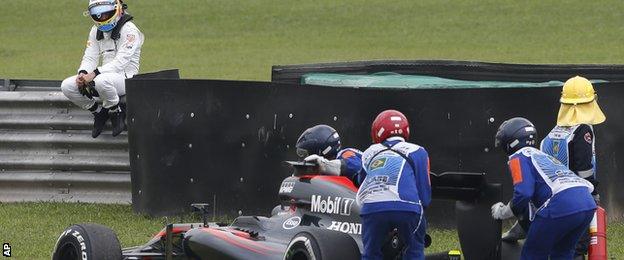
Fernando Alonso seemed to spend more time looking disconsolate on the barriers of F1 circuits than he did in his McLaren last year
Fernando Alonso left Ferrari for McLaren-Honda at the end of 2014, external because he felt the English team would provide him a quicker route to a third drivers' title than Maranello, where he had suffered five years of disappointments.
It did not look that way in 2015, as McLaren laboured at the back of the grid largely as a result of the dire performance and reliability of the Honda engine in the Japanese company's first year back in the sport.
But, like Ferrari in 2014, there was a very specific reason for Honda's lack of performance.
As Red Bull technical chief Adrian Newey has pointed out, the internal combustion part of the Honda engine was actually pretty decent - not a Mercedes beater, but not a million miles off. The problem was the hybrid aspect, particularly energy recovery from the turbo.
Honda were well aware of this and had by last summer laid specific plans to resolve the issue.
McLaren could, then - at least in theory - make the 2.5-second a lap leap in performance that Alonso was saying was possible in the last three or four races of last year.
But what if they don't?
Honda insists the new engine will be ready for the start of the season, but what happens if it is still catastrophically off the pace?
Alonso and team-mate Jenson Button generally kept their emotions in check in 2015, their frustration only occasionally bubbling to the surface.
But, if it continues into 2016, it is hard to imagine Alonso resigning himself to it and laughing it off in the way he did with his now-famous 'deckchair moment' in qualifying in Brazil last November.
One of the sport's greatest talents is 35 this summer. He may have a contract until the end of 2017, but time is running out for him to win the extra championship his status in the sport merits, and which he craves. If Honda and McLaren don't dramatically up their game, there could be trouble in store.
Difficult second year syndrome
Toro Rosso drivers Max Verstappen and Carlos Sainz were two of the stars of 2015.
Verstappen, who turned 18 on 30 September, caught the eye with a series of brave, aggressive and brilliantly improvisational overtaking manoeuvres - and put himself on the radar of Mercedes and Ferrari - but Sainz was in his own way equally impressive.
Just as the fact that Button beat Alonso in the championship in 2015 was not reflective of the Spaniard's general superiority in races, so the 31-point gap between Verstappen and Sainz was not a fair representation of the relative performance of the Toro Rosso drivers.
Sainz, who celebrated his 21st birthday on 1 September, had the worst of the reliability at the team and actually out-qualified Verstappen 10-9 over the season.
While Verstappen grabbed all the headlines, Sainz's more measured approach also won its admirers. And there were times when the son of the eponymous rally legend made the Dutchman look ordinary - notably in the wet in Japan and the USA.
Both men appear to have bright futures, but to get to them they have to navigate a second season that always tends to be more difficult than a driver's first.
In a driver's debut year, expectations are low and everything tends to be new, shiny and wonderful.
But just as the demands of an F1 season become more mundane - and therefore more difficult to deal with - expectations and pressures rise and drivers can find themselves struggling.
It will be fascinating to see how Verstappen and Sainz deal with this - especially as they are, in a very real and immediate way, driving for their careers.
Ruthless Red Bull tends to give its drivers two seasons in Toro Rosso before deciding whether to promote them or dump them. Can they both survive?
Will politics overshadow the racing again?
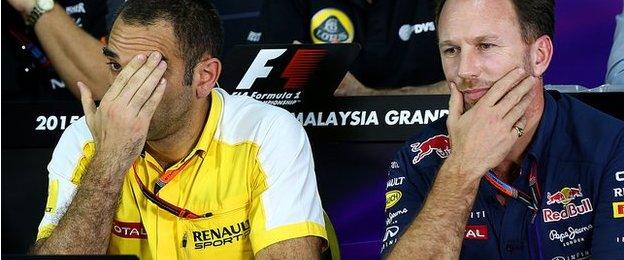
Red Bull's bitter fallout with Renault led to the team looking for an alternative engine supplier - before plumping for a rebadged Renault when they ran out of options
Last season was an especially bad-tempered one off-track, with political arguments - many of them revolving around engines - poisoning the atmosphere in the paddock and between the sport's heavy-hitters.
And the new year starts with two important deadlines.
On 18 January, the engine manufacturers will deliver to the strategy group of the sport's bosses their proposals for making power-units cheaper, simpler, noisier and more freely available.
And 31 January is the date governing body the FIA set for its president Jean Todt and F1 commercial boss Bernie Ecclestone to come up with proposals to solve pressing issues - specifically on governance, power units and cost reduction.
The two dates are inter-related. If what the engine manufacturers propose does not meet with the satisfaction of Todt and Ecclestone, they may seek to act under a "mandate" given to them by the FIA to make changes.
But Ferrari have already said the FIA has no right to grant them that power - and made threatening noises about it.
Red Bull's engine crisis is partly the cause of all this, even if it was partially self-inflicted last year. But that story will rumble on - the former champions, who are close to Ecclestone, have a stop-gap solution with a re-badged Renault in 2016 but no supply sorted for 2017.
Add in a potential European Union investigation into the governance and prize-money structures of F1, and there is a severe danger politics will overshadow the racing again.
- Published25 December 2015
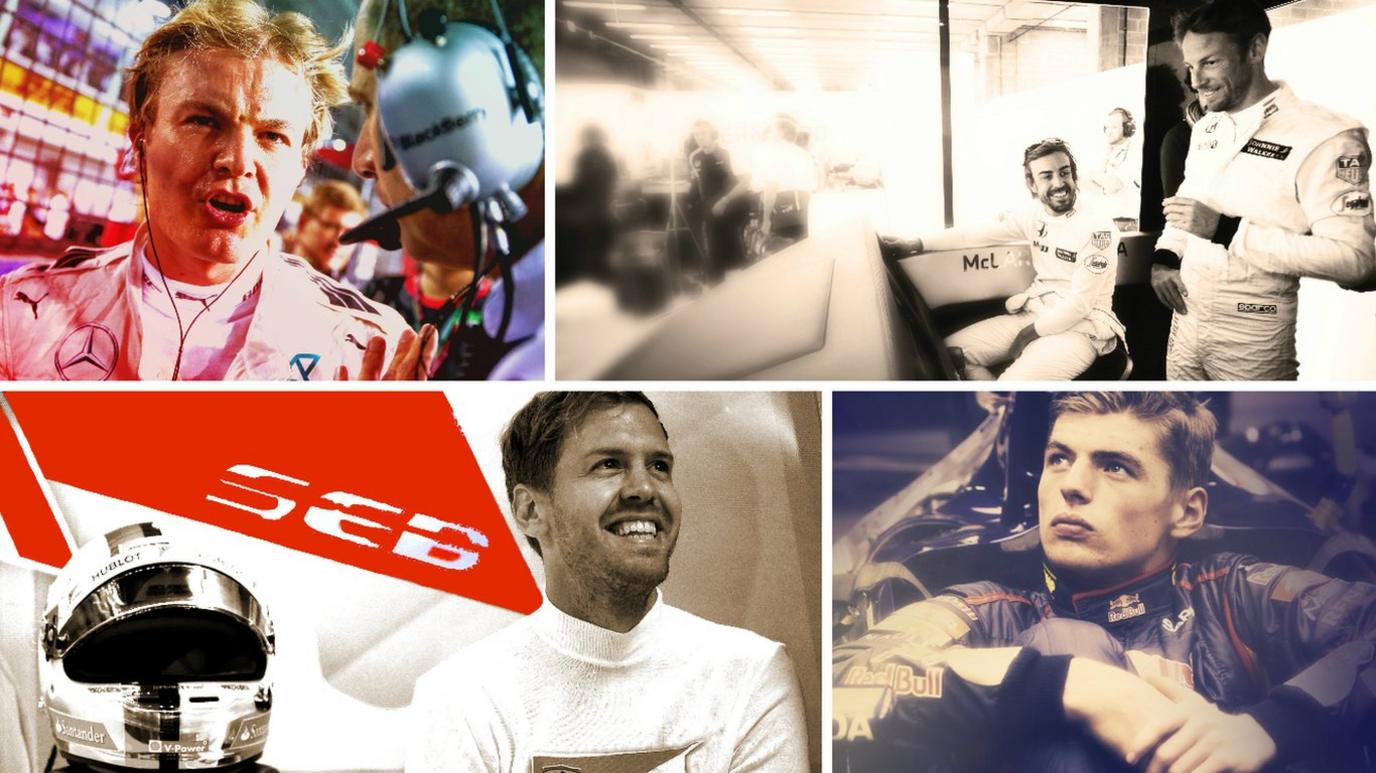
- Published20 December 2015

- Published23 December 2015

- Published29 December 2015

- Published18 December 2015

- Published2 November 2018

- Published26 February 2019
